Double Ikat: Unveiling the Intricate Art of Double-Weaving
In the world of textiles, the ikat technique stands as a testament to human creativity and meticulous craftsmanship. The term "ikat" originates from the Indonesian word "ikat," meaning "to bind." This intricate weaving process involves resist dyeing yarns before they are woven into fabric, creating captivating patterns that are both visually stunning and historically significant. While single ikat, where only the warp or weft threads are tied and dyed, is widely recognized, the double ikat technique takes the art form to a whole new level of complexity.
The Art of Double Ikat: A Journey of Precision
As the name suggests, double ikat involves dyeing both the warp and weft threads before weaving. This meticulous process requires an exceptional level of skill and patience, making double ikat textiles highly prized and sought after. Imagine a tapestry where the intricate design is not merely woven into the fabric but actually emerges from the very threads themselves. That is the essence of double ikat.
The process begins with meticulously tying sections of both warp and weft threads with a resist, typically using natural materials like beeswax or rubber. The resist prevents dye from penetrating the bound areas, resulting in intricate patterns. The dyeing process is often repeated multiple times, with different colors being applied in stages, creating a rich tapestry of hues.
Steps in the Double Ikat Process:
- Warp and Weft Preparation: The warp and weft threads are meticulously prepared and divided into sections based on the desired design.
- Resist Dyeing: Each section is meticulously tied with resist, creating intricate patterns that will ultimately define the fabric's design.
- Dyeing Process: The threads are carefully dyed in stages, with different colors applied to create the desired color palette.
- Weaving: The dyed warp and weft threads are interwoven on a loom, creating a fabric where the patterns emerge from the very threads themselves.
Double Ikat vs. Single Ikat: A Comparative Glance
While both double and single ikat involve resist dyeing, the complexity lies in the number of threads that are dyed. Single ikat, where either warp or weft threads are dyed, is considerably simpler than double ikat. The intricate patterns of single ikat are often linear or geometric, while double ikat can achieve intricate and even figurative designs.
Beyond Ikat: Exploring Other Weaving Techniques
The world of weaving offers a diverse range of techniques, each with its unique characteristics and artistic expressions. Here are a few notable examples:
- Plain Weave: This basic weave is characterized by a simple over-and-under interlacing of warp and weft threads, resulting in a smooth and even fabric.
- Twill Weave: This weave creates a diagonal rib pattern, adding a distinct texture to the fabric. It's known for its durability and is commonly used for denim and suiting.
- Satin Weave: The satin weave creates a smooth and lustrous fabric with a satin finish. It's often used for luxurious garments and decorative fabrics.
- Jacquard Weave: This advanced weaving technique uses a complex system of punched cards to create intricate and elaborate designs. Jacquard weaves are often used for tapestries, upholstery, and high-end clothing.
Patola Sarees: The Epitome of Double Ikat Mastery
The Patola saree, a revered textile tradition of Gujarat, India, exemplifies the exquisite art of double ikat. These sarees are renowned for their intricate geometric and figurative patterns, which are woven with exceptional precision. The vibrant colors and intricate designs often depict scenes from mythology, nature, or everyday life, making each Patola saree a unique masterpiece. The creation of a Patola saree can take months, sometimes even years, making it a treasured heirloom that is passed down through generations.
Examples of Double Ikat Patterns in Patola Sarees:
- Geometric Motifs: Patola sarees often feature intricate geometric patterns, such as squares, triangles, and diamonds. These motifs can be arranged in complex grids or interwoven to create mesmerizing designs.
- Floral Designs: The beauty of nature is often reflected in Patola sarees, with elaborate floral motifs ranging from delicate buds to blooming flowers.
- Mythological Scenes: Patola sarees often feature scenes from Hindu mythology, depicting gods, goddesses, and epic tales. These intricate designs showcase the rich cultural heritage of the region.
The Legacy of Double Ikat
Double ikat is more than just a weaving technique; it's a legacy passed down through generations, carrying the stories and traditions of the communities that practice it. From the intricate designs of Patola sarees to the vibrant patterns of other double ikat textiles, this art form continues to inspire and captivate the world. The complexity, precision, and artistic beauty of double ikat stand as a testament to human ingenuity and the enduring power of traditional craftsmanship.

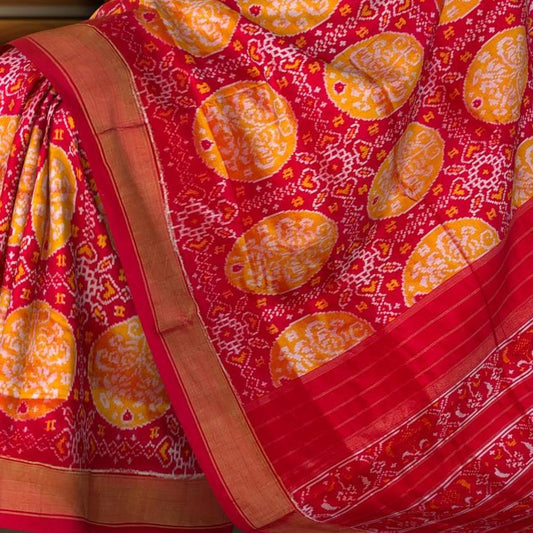
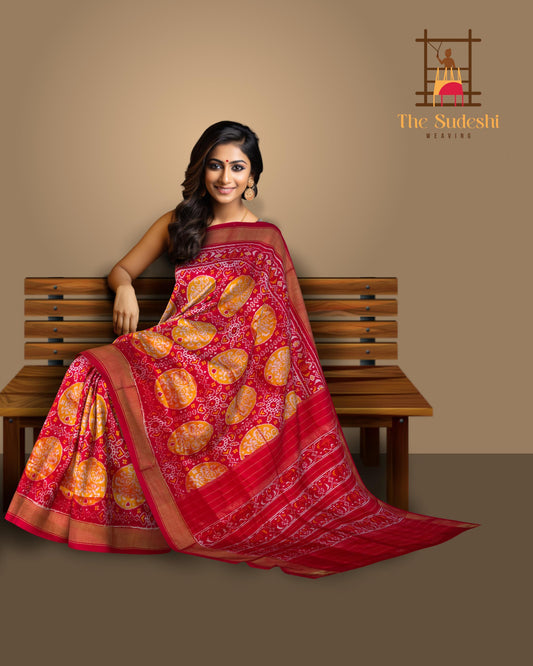
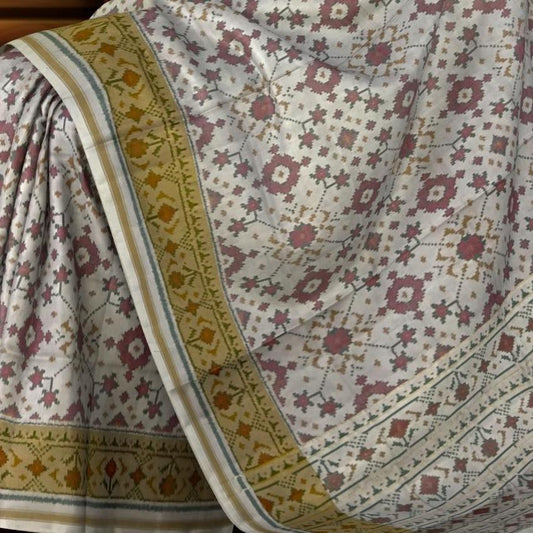
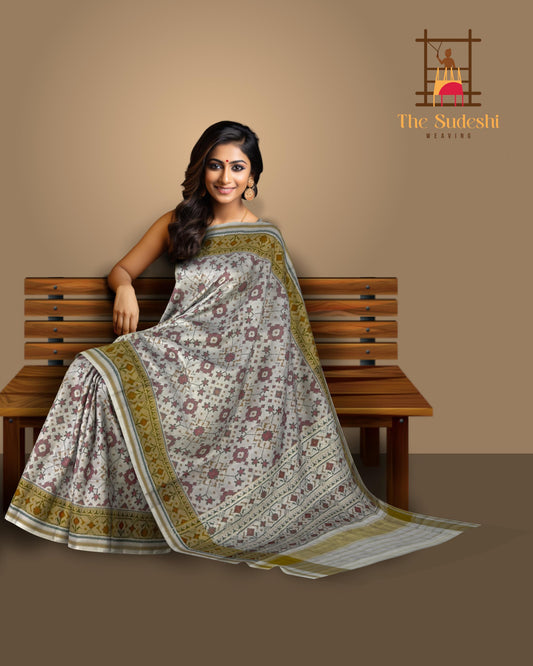
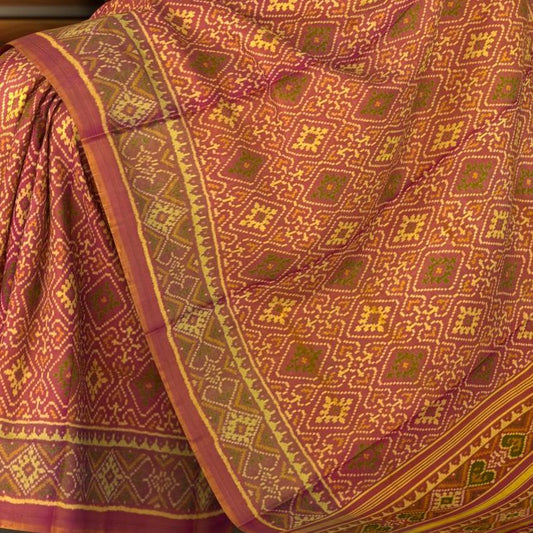
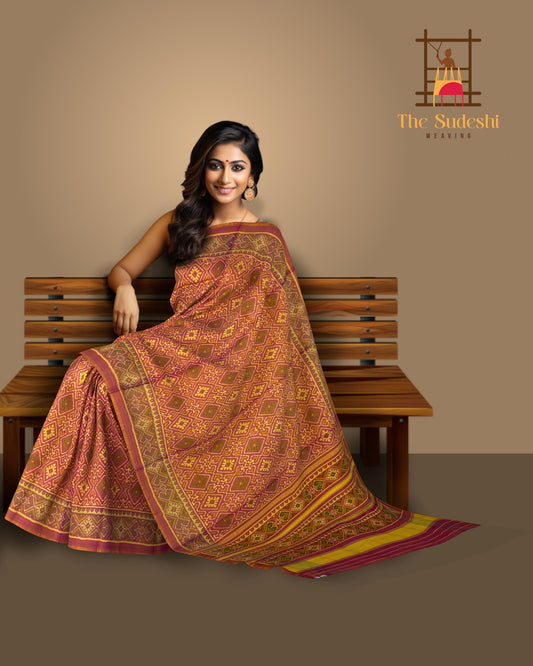
Leave a comment
Please note, comments need to be approved before they are published.